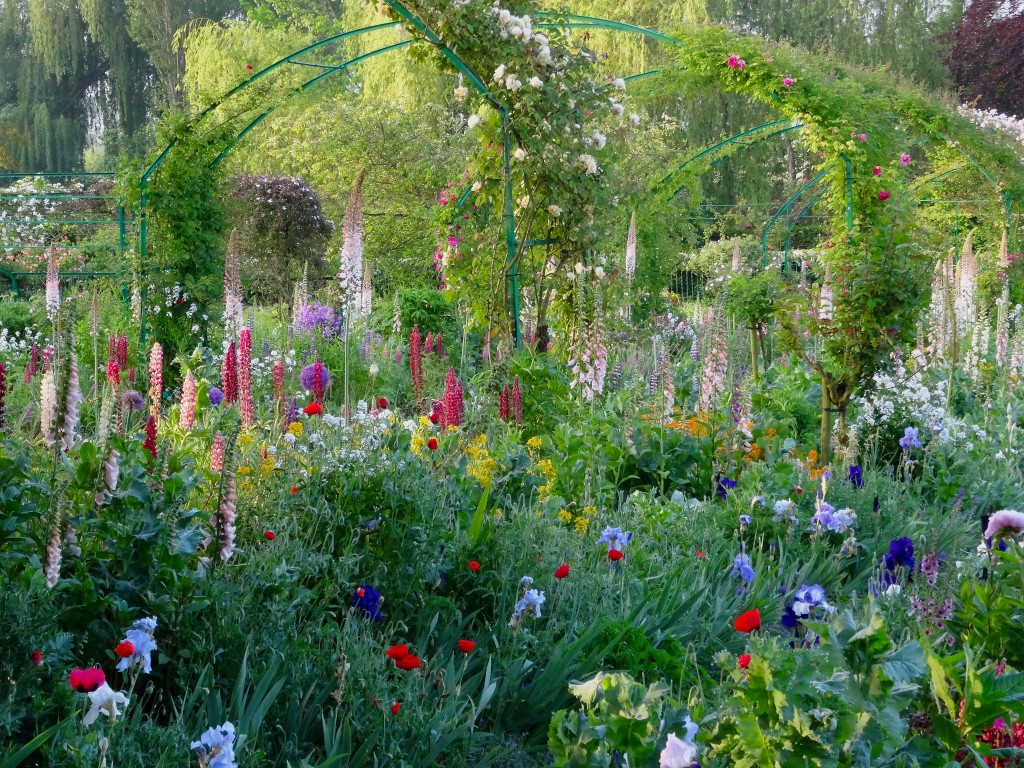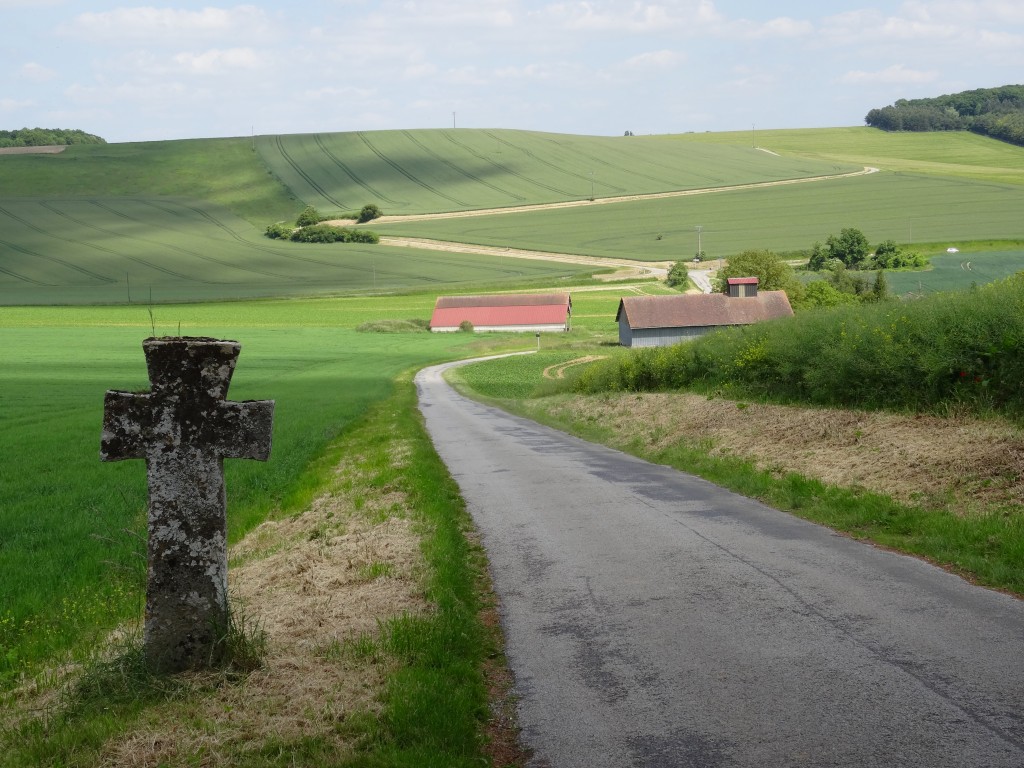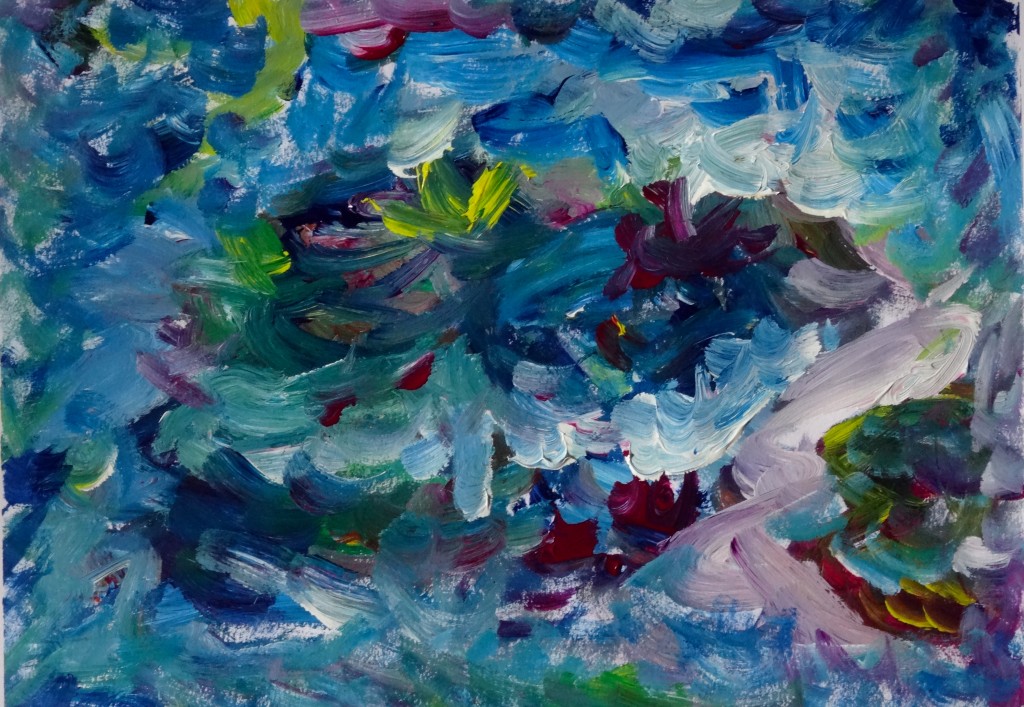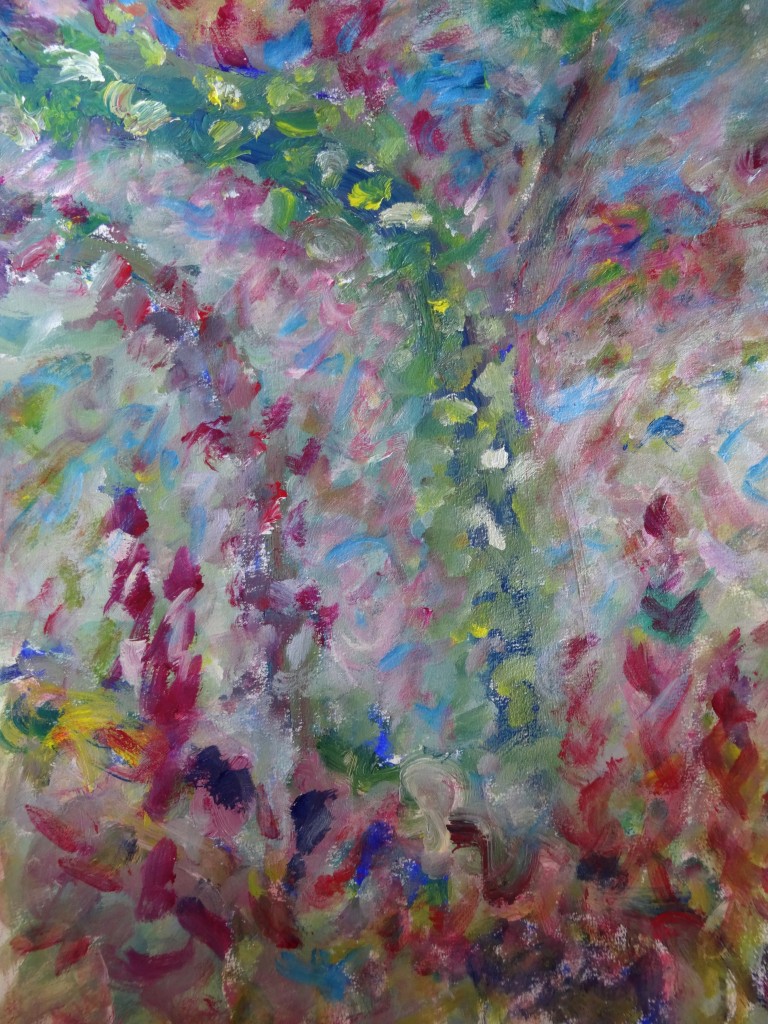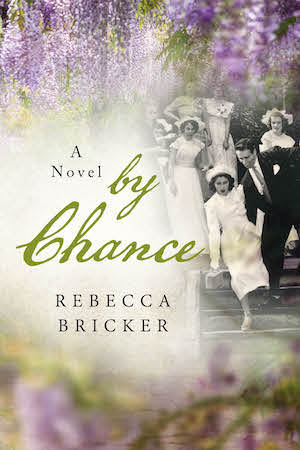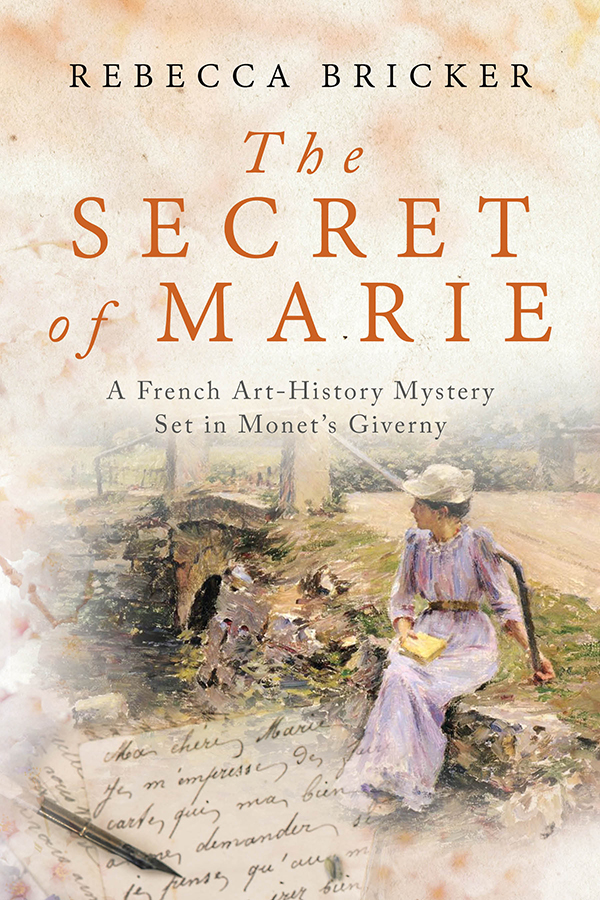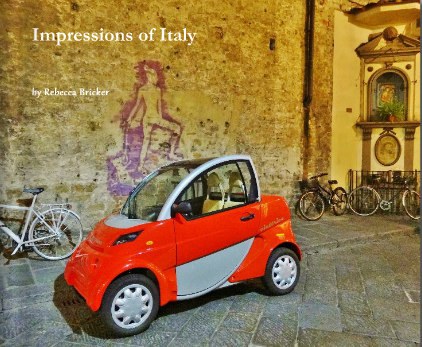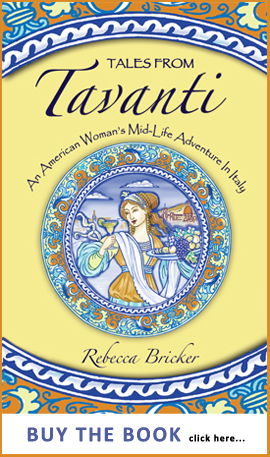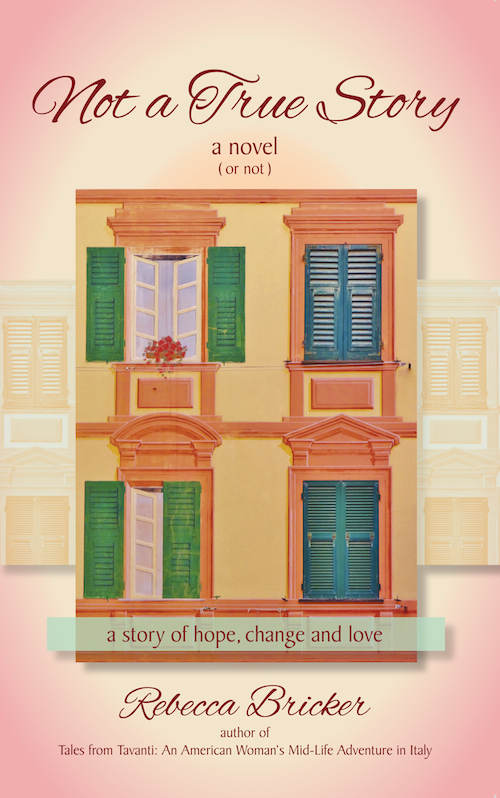I recently received an invitation from a painting program called Art Colony Giverny to join their spring session in Monet’s gardens. I jumped at the chance, but quickly confessed to the organizers that I hadn’t painted a picture since first grade, when my trees looked like ice cream cones.
Not a problem, they said. I didn’t have supplies. Again, no problem. For a nominal fee, they’d supply the easel, the paints, the brushes, the paper. But seriously, I told them, the last thing I painted was my college dorm room 40 years ago — and that turned out to be a bit of a mess.
No worries, they assured me. All I had to bring was my creative spirit.
I’ve been spending a lot of time in Giverny and the surrounding Normandy countryside recently, working on my next book. It’s an art-history mystery that takes place in France when Impressionism was upending the art world in the late 1800s.
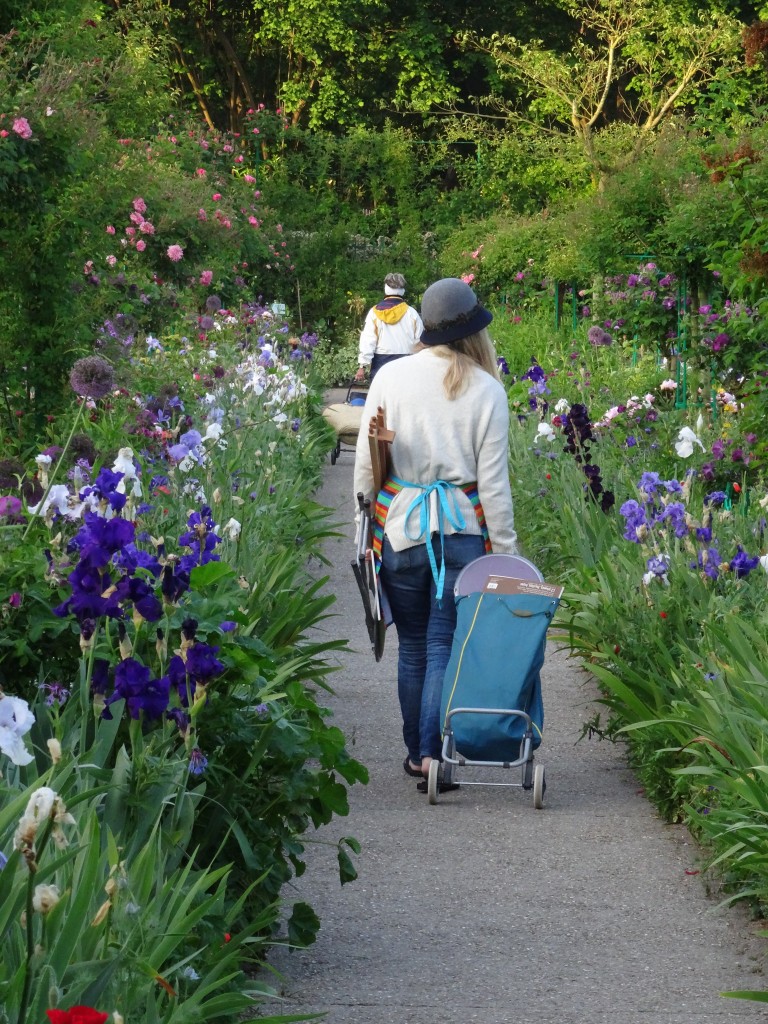 During that time, American painters followed Monet to Giverny, an idyllic village (about an hour from Paris) in the Seine Valley, to paint en plein air (in the open air) to capture nature in its changing organic beauty.
During that time, American painters followed Monet to Giverny, an idyllic village (about an hour from Paris) in the Seine Valley, to paint en plein air (in the open air) to capture nature in its changing organic beauty.
There are hazards that come with painting en plein air. Nettles can prick your toes (best not to wear sandals). A gust of wind can topple your easel (as you will read). And a cow grazing in the pasture you’re standing in might come over and lick your canvas (true story).
During my week with Art Colony Giverny, I felt like a kid at camp — a wonderful art camp. On my first painting outing, we stood next to a country road with a sweeping view of a pastoral landscape that the Impressionists might have painted. Below us, next to the road, was an ancient stone cross, marking the way for soldiers of the French Crusades.
Everyone else in our talented group set up their easels and quickly got to work that afternoon. I needed instruction on how to set up the easel. Within the first 15 minutes, I had a thorn in my toe. But I was distracted by the beauty around me as the shadows of billowy clouds chased each other across the fields.
My assignment was to draw, in blue paint, the zig-zag of the road that cut across a distant hillside. Caroline Homes Nuckolls, the group’s teacher and organizer extraordinaire, showed me how to hold the brush. It was like learning to hold a pencil, back in first grade. It felt strange at first, because it rested in the palm of my hand and not between my thumb and forefinger.
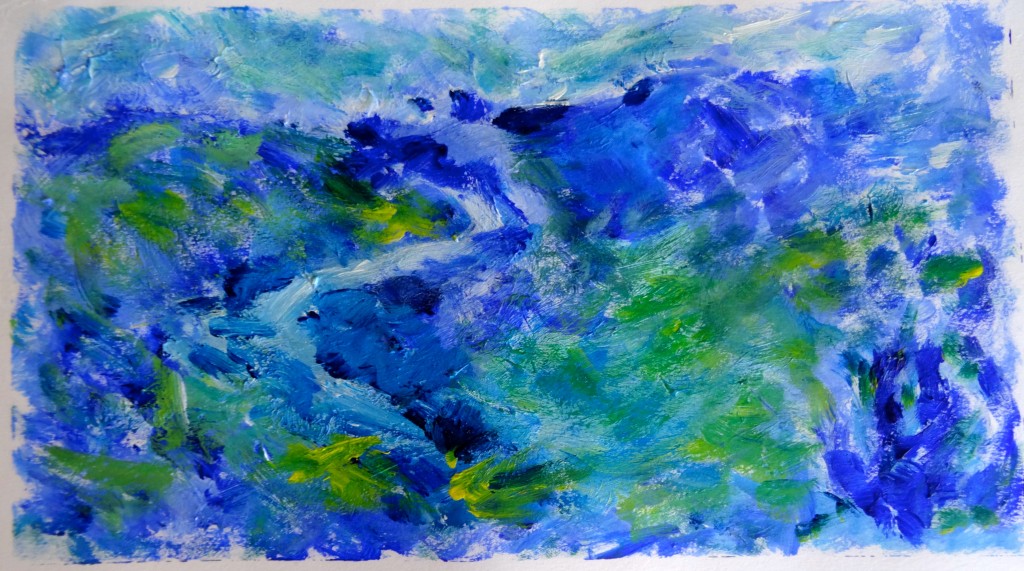 I awkwardly drew the scene in blue paint. Caroline sensed my willingness to play and eventually added dabs of colors to my palette. And what happened next was pure JOY. A scene emerged that looked more like the Seine flowing past the white chalky cliffs of the river valley than the country road before me. Oh well. Artistic license, I called it.
I awkwardly drew the scene in blue paint. Caroline sensed my willingness to play and eventually added dabs of colors to my palette. And what happened next was pure JOY. A scene emerged that looked more like the Seine flowing past the white chalky cliffs of the river valley than the country road before me. Oh well. Artistic license, I called it.
As the colors started blending and morphing into new colors in my picture, I started laughing. A lovely Finnish woman named Liz, who was painting near me, asked, “Why are you laughing?”
I was back in first grade again. “This is so much FUN!”
Within the span of the week, I learned how to wield a brush, how to turn primary colors into tertiaries, how to compose a scene, and how to tell when a painting is finished (good to know!).
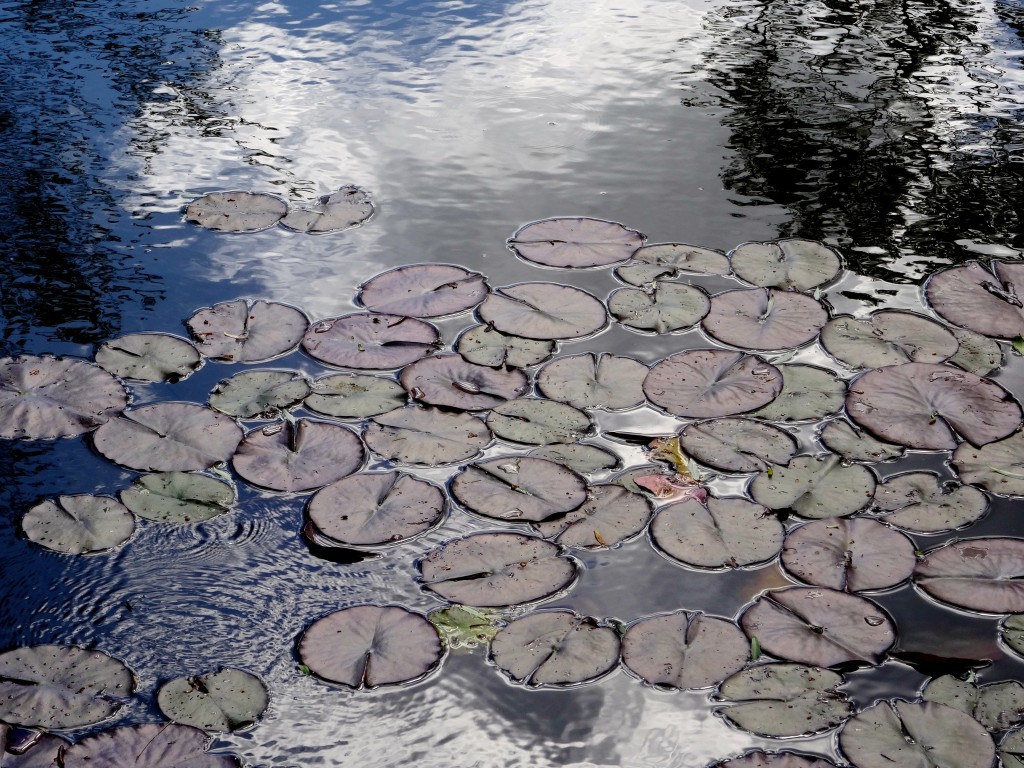 In my first solo effort, I painted at Monet’s lily pond at twilight. But by the time I got myself set up after the class demonstration, I had only 20 minutes to paint before it would be time to pack up and get back to the van at the front gate. So I channeled the Maestro himself and rendered, with mindless abandon, my impression of a cluster of lily pads that I photographed earlier.
In my first solo effort, I painted at Monet’s lily pond at twilight. But by the time I got myself set up after the class demonstration, I had only 20 minutes to paint before it would be time to pack up and get back to the van at the front gate. So I channeled the Maestro himself and rendered, with mindless abandon, my impression of a cluster of lily pads that I photographed earlier.
My Impression Nymphéas…
The added allure of this painting program, aside from its charming hosts who are so happy to share their love of Giverny, is that Art Colony Giverny has access to Monet’s gardens after public viewing hours, from 6-8 p.m. And if you’re a morning person, you can go in with the gardeners at 7 a.m. Early morning in the gardens is magical, as the sun pierces the mist that often settles overnight in the Seine Valley.
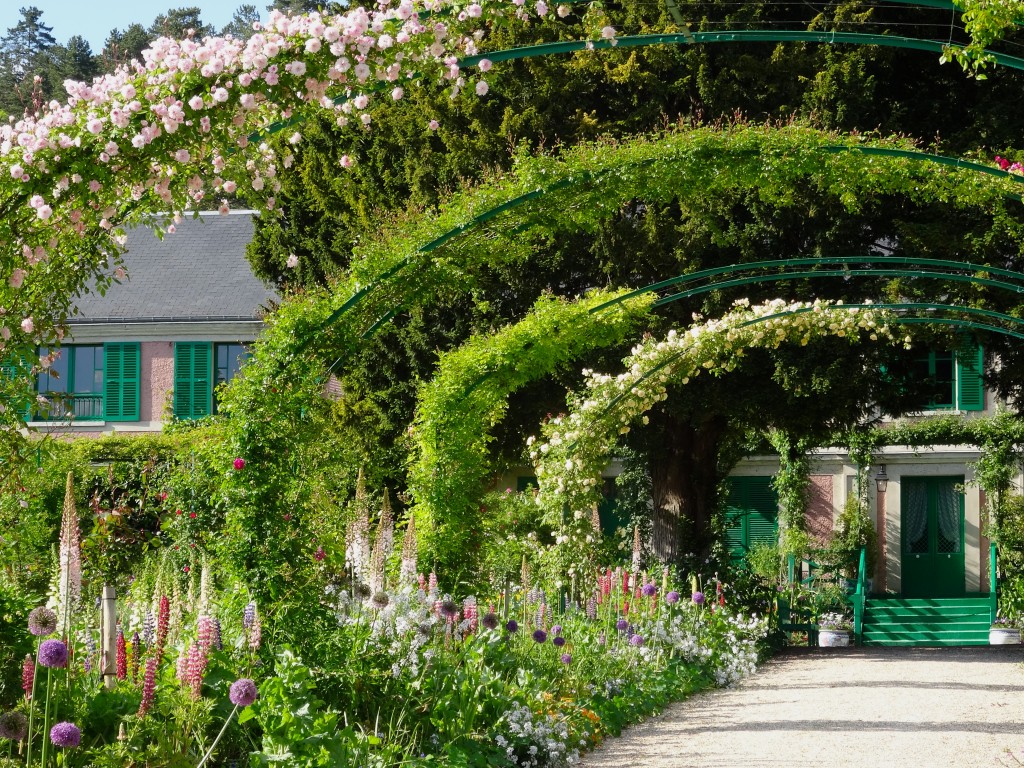 On our last evening in the garden, Caroline suggested I try painting on canvas.
On our last evening in the garden, Caroline suggested I try painting on canvas.
I hesitated. Caroline’s sweet husband Rich said to me, “The canvas is more afraid of you than you are of it.” (He was quoting an American artist, the late Gale Bennet, who along with his wife Cello ran an art program called ArtStudy Giverny in the village for many years. Caroline had studied with Gale and assisted as a coordinator for their program.)
I decided to paint on paper and knew exactly where I wanted to set up. I’ve spent countless hours photographing the gardens and love the floral profusion along the Grande Allée, the wide path under a trellised archway leading to Monet’s house.
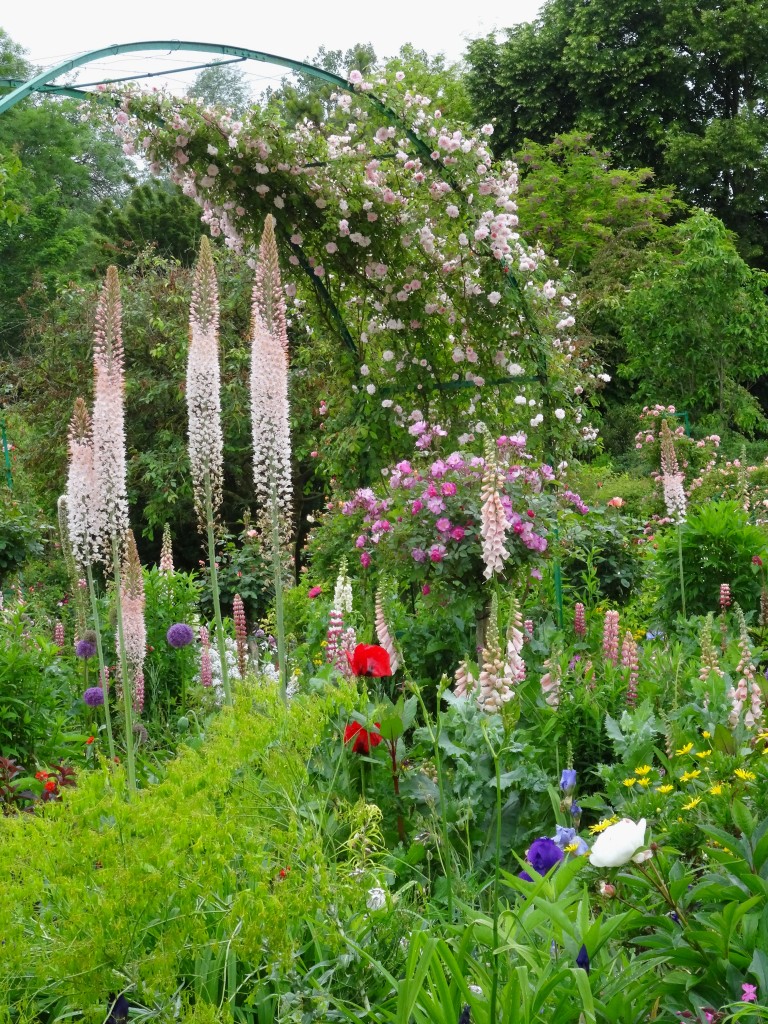 Caroline got me set up at the top of the Grande Allée and went off to the lily pond, at the far end of the property (accessible via a tunnel under a road that subdivides the Monet estate).
Caroline got me set up at the top of the Grande Allée and went off to the lily pond, at the far end of the property (accessible via a tunnel under a road that subdivides the Monet estate).
I was on my own. I looked down the Grande Allée and hoped for the best. No ice-cream-cone trees, I told myself.
The first strokes didn’t go down well. So I folded up that sheet of paper and used it as a mat under the tub of water I would be cleaning my brushes in. My second attempt gradually looked promising.
I should mention that the location I had chosen for this painting exercise was by the front steps of Monet’s house — not exactly the most tranquil spot on the property. As the staff closed up the house for the day, they congregated on the steps. It’s near the Monet Foundation offices, and a volunteer stopped briefly to chat and asked me to give Caroline her regards. And then a photography crew showed up with camera lenses as long as my arm and started taking pictures of me. That really made me laugh.
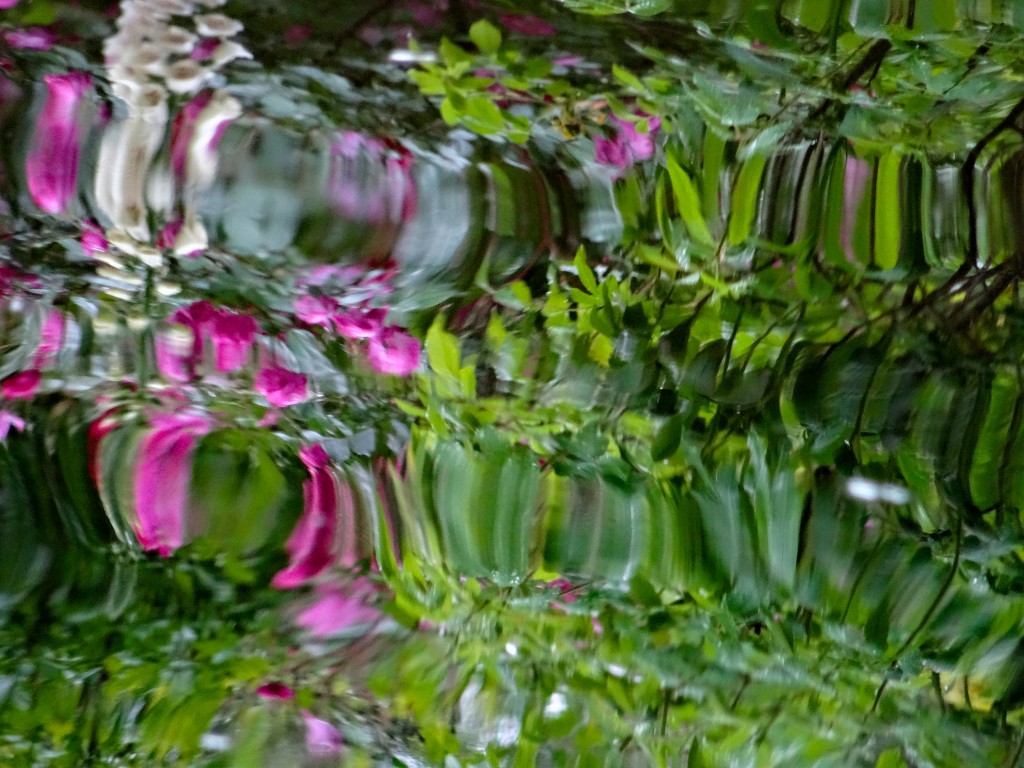 Then all of a sudden, the wind kicked up. As my easel tipped toward me, I grabbed the painting, but dropped the palette that was covered with blobs of paint. It landed face down on the pebbled walkway.
Then all of a sudden, the wind kicked up. As my easel tipped toward me, I grabbed the painting, but dropped the palette that was covered with blobs of paint. It landed face down on the pebbled walkway.
All I could say (under my breath) was SH****T!!
My impressionist imprint on the walkway was about the size of a placemat. The paint was acrylic, so I poured water from a large bottle in my supply bag and made a very colorful puddle. I started dabbing it with paper towel…when I realized the head gardener, renowned English horticulturalist James Priest, was coming my way, on his evening rounds.
I had been hoping to meet him all week. But not exactly under these circumstances.
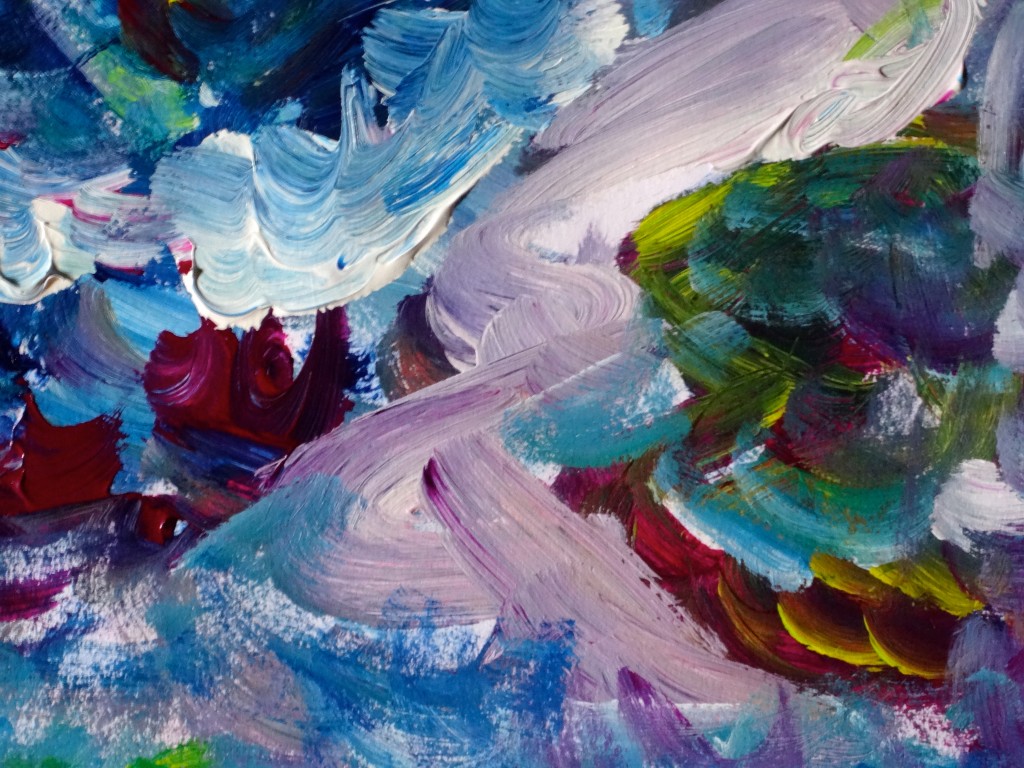 I quickly pressed more paper towel on the spot and then covered it up with my discarded picture. I set my little tub of water on top of everything, concealing the evidence.
I quickly pressed more paper towel on the spot and then covered it up with my discarded picture. I set my little tub of water on top of everything, concealing the evidence.
My painting sustained only minor damage. I quickly put it back on the easel and got back to work. Thankfully, Mr. Priest turned down another allée.
I was sweating paint pellets by the time Caroline returned. When she started critiquing my painting, I whispered to her, “We have something more important to discuss.”
Her eyes grew wide when she saw my sidewalk art. We worked as a team for ten frantic minutes, flushing the spot with water and dabbing it with paper towel. She pulled out a lovely boar paintbrush from her bag and used it like a scrub brush. Mon dieu!
And then she said to me, “We need more abrasion. Get some dirt.”
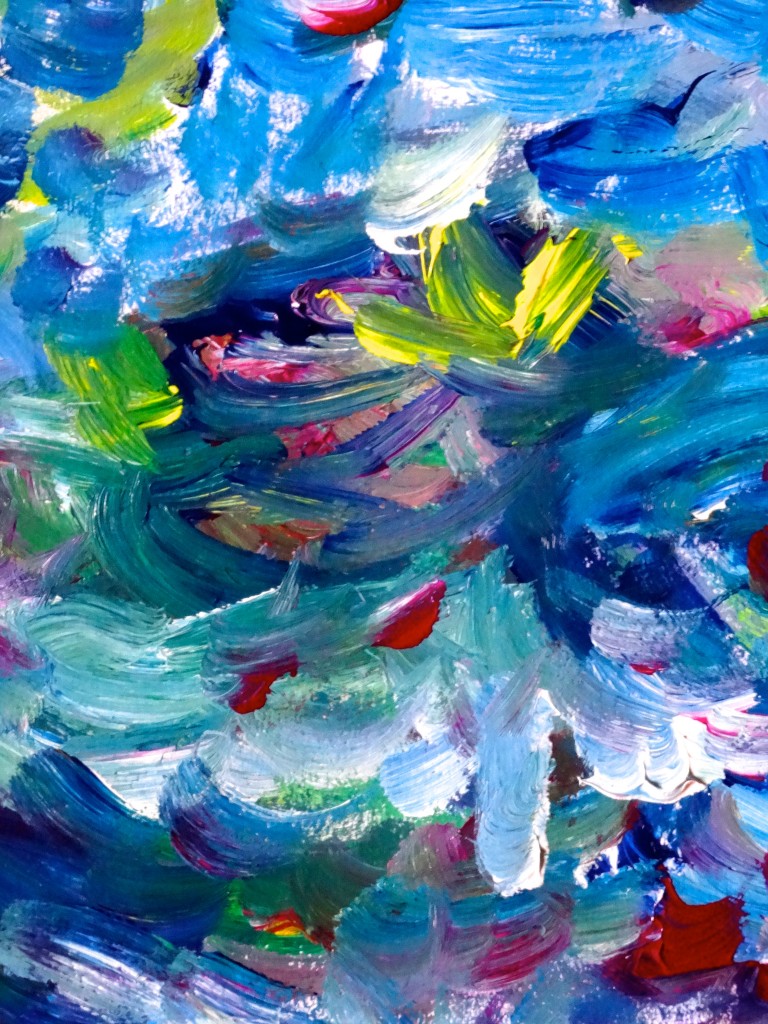 “Seriously?” I looked over at the carefully mounded soil in a bed of newly planted geraniums. This is Monet’s garden, for cryin’ out loud. I casually sauntered over to the flowerbed and pretended to be inspecting a geranium as I scooped up a handful of richly composted soil.
“Seriously?” I looked over at the carefully mounded soil in a bed of newly planted geraniums. This is Monet’s garden, for cryin’ out loud. I casually sauntered over to the flowerbed and pretended to be inspecting a geranium as I scooped up a handful of richly composted soil.
The dirt helped. “We need more,” Caroline said.
As I went back for another handful, I saw Mr. Priest walking toward us.
I felt like Lucy and Ethel in Monet’s Garden. We were busted. But how would we charm our way out of this?
Caroline jumped to her feet and intercepted Mr. Priest — she knows him as James. She stalled him long enough, so that by the time they reached the scene of the crime, the spot was spotless.
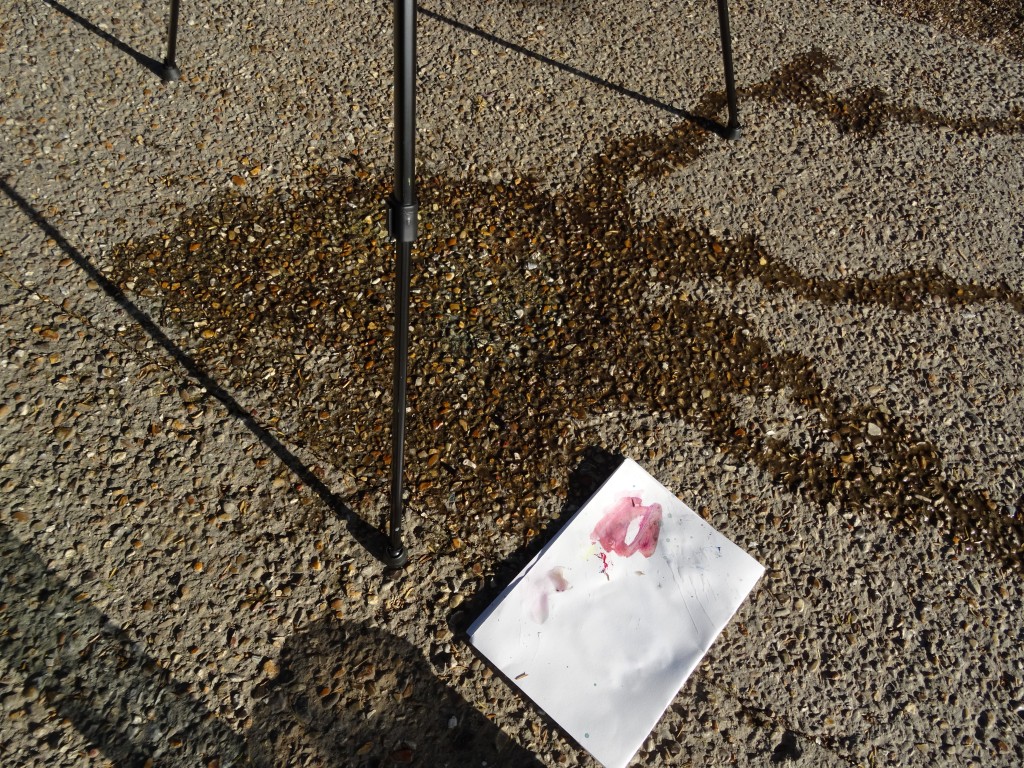 I profusely apologized to him, fearing the group might lose painting privileges in the garden. I knew he would be attending the party that night where the program participants would be showing their work.
I profusely apologized to him, fearing the group might lose painting privileges in the garden. I knew he would be attending the party that night where the program participants would be showing their work.
“I hope to redeem myself this evening,” I said to him.
“And how do you plan to do that?” he asked me. “Do you sing?” 😉
“I do, but I’ve also put together a slideshow of the gardens that I think you’ll enjoy.” I had spent my free time that week culling more than 3,000 photos I’ve taken of Giverny and the gardens, for a photo book I’m planning to publish in tandem with my art-history mystery.
And so…it all ended well. It was a thrill for me to share my photos with James Priest that evening. He asked me questions about how I was able to achieve certain effects, especially with reflections on the lily pond. That made me smile. I had nothing to do with it.
“It’s all about the sky,” I told him. The clouds, the light, the breeze rippling across the water — nature’s special effects that Monet captured so well.
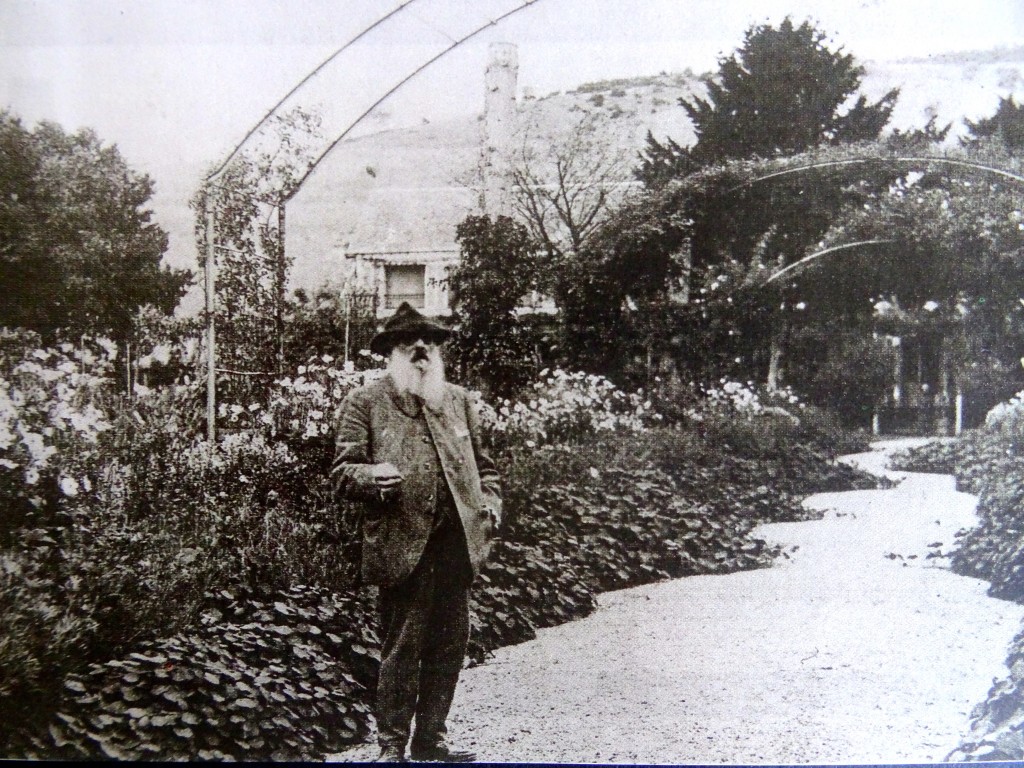 It was a great party. A local artist, who was there that evening, had had a similar mishap in the gardens. No harm done. In fact, I wondered if we both had experienced a wink and a nudge from the Grand Master himself.
It was a great party. A local artist, who was there that evening, had had a similar mishap in the gardens. No harm done. In fact, I wondered if we both had experienced a wink and a nudge from the Grand Master himself.
Claude Monet in his Grande Allée, 1925
For more information about Art Colony Giverny, contact Caroline and Rich Nuckolls:
www.artcolonygiverny.com
e-mail: info@artcolony-giverny.com
<<< my harried impression of the Grande Allée
(note: no ice-cream-cone trees!) 😉
{ 8 comments }
